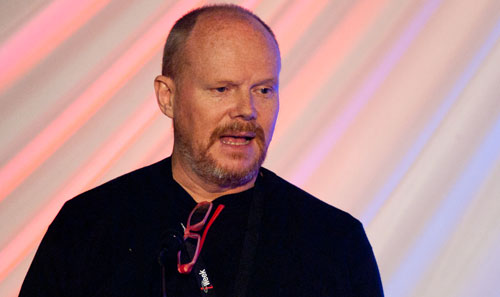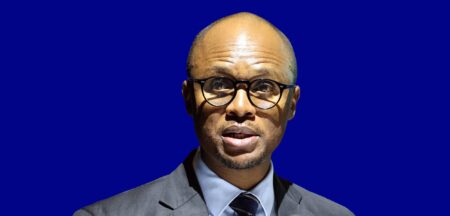
“White spaces.” These chunks of radio frequency spectrum allocated to broadcasters but not used could hold the solution to SA’s electronic communications challenges.
Steve Song, founder of Village Telco — a social enterprise that uses open-source telecommunications software and low-cost wireless mesh networking technology to deliver more affordable telephony — says SA needs to ensure spectrum is suitably allocated to encourage newcomers.
White spaces could play a crucial role in this regard, he says.
Song says that when one compares Internet service providers (ISPs) to telecoms operators, the group is ruthlessly competitive. Operators, on the other hand — and particularly the mobile providers — are relatively slow to innovate and reduce prices.
“The big difference between them is access to spectrum,” Song says. “It’s difficult to get competition going between operators without giving them access to spectrum.”
He says that until recently the most interesting portion of spectrum for service providers was in the 900MHz to 3GHz range, but that this is changing with the pending release of the so-called “digital dividend” — spectrum that will become available when TV broadcasts move from analogue to digital, the deadline for which is just over two years away.
“The lower down the spectrum you go, the better the propagation, hence the excitement about 900MHz and lower,” Song explains. The longer wavelengths of lower frequencies carry information further and through obstacles in a way shorter wavelengths can’t. However, there is a trade-off: lower throughput in terms of how much data can be carried.
Song says that although a great deal is understood about the technology of spectrum, “we don’t understand the economics of it quite as well”. He says the pressing question is whether regulators should treat spectrum as a common resource or private property.
“Is it like a stretch of land that we want to get maximum value out of, or risk the so-called ‘tragedy of the commons’ by opening it up to everyone and ending up with overuse?”
Song says some people subscribe to the school of thought that there is a hard limit to how much use can be gained from available spectrum. It’s an argument put forward by mathematician Claude Shannon.
Others people agree with the theories of Martin Cooper — who is largely credited with inventing the mobile phone — who considered spectrum to be like data: flexible and reusable. Cooper’s Law, much like Moore’s Law that concerns processing power, suggests that spectrum efficiency doubles every 30 months.
“As with all complex things, the truth is somewhere in between.”
According to Song, while a single transmitter with a particular configuration may have limits, as hardware evolves, greater efficiency becomes possible via power, antennae and other component developments. “So there’s neither a hard limit nor infinite flexibility.”
Song says the primary motivation for spectrum regulation is “to banish interference”. He says spectrum interference mustn’t be misconstrued as interference in the sense of obstruction.
“Waves don’t disappear, they bounce into each other.” Song says as technology improves, it can better deal with interference. “It’s like speaking a different language at a party and hearing someone else speaking your language; you can hear them over the noise of the room.”
Song says that until 20 years ago, spectrum was assigned on a first come, first served basis. Then, as demand increased, it became a “beauty contest” where regulators attempted to find the best-positioned parties via “qualitative analysis”.
“The problem with this approach is that it’s completely subjective and prone to influence and the weighting of the answer.”
Song says one of the big surprises of recent years has been the explosion of unlicensed spectrum use, particularly for Wi-Fi. Next year, 1bn Wi-Fi chipsets will be sold globally, which is more than the number of mobile phones expected to ship in the same period.
“There assertion that there is a mobile phone ‘miracle’ underway in Africa is true, but what isn’t talked about is Wi-Fi.” Song says every operator should have a “complementary Wi-Fi strategy” because the technology is the “premier offload option” to ease network congestion.
The auctioning of spectrum is a complex issue that “works well when done right, but when done badly, you may as well have given the spectrum away”.
He says a potential solution, or at least an alternative that deserves further investigation from SA regulators is “serendipitous spectrum re-use” where primary spectrum owners allow secondary users to access spectrum when it’s not in use.
The prime example, he says, is white spaces spectrum in the broadcasting bands.
“When TV licenses were first granted in the 1930s in the US, the crudeness of the technology meant broadcasting was the equivalent of shouting because of the ‘deafness’ of TVs.”
The result was that regulators guaranteed broadcasters space between channels, or empty spectrum, so that there would be no overlaps or interference. “Now we can serendipitously re-use it to deliver broadband.”
Song says the process of opening up the white spaces has gone ahead in the US via the Federal Communications Commission, that country’s telecoms regulator.
Despite huge resistance from makers of wireless products and broadcasters, a compromise was reached whereby a geo-location-based database has been created and has to be checked to ensure devices don’t attempt to use the same spectrum.
“Looking at SA, there’s lots of space that can be reused and it doesn’t require reallocation or refarming of spectrum. It’s the low-hanging fruit of regulation, and it’s ripe [for the picking].”
Song cites the allocation to state-owned company Sentech of a portion of spectrum at 2,6GHz, which it has failed to use, as how a regulator shouldn’t assign spectrum. “It’s a case of ownership retarding the process and wasting potential. Once you give away spectrum, it’s hard to move the incumbent and reclaim it.”
That is precisely what has happened with Sentech, which was assigned spectrum that is well suited to technologies like long-term evolution, the next generation mobile data services system.
Song says author Tim Harford, in his book Adapt, writes that “with increasing complexity we’re more likely to get things wrong” and that this theory is particularly applicable to spectrum allocation.
“When we think about spectrum, we need systems that ‘fail well’. So, if we give spectrum away and the recipient fails to use it, that’s a catastrophic failure. Rather, we need to place small bets and regulate to ensure this happens.”
Song says the digital dividend is “another potential space for catastrophic failure”. He says long delays deny others access to useful spectrum that will be made available when the migration to digital broadcasting is completed.
He suggests using “set asides” for auctions — that is, guaranteeing a portion of spectrum will be allocated to newcomers. “We can be remedial and try to correct bad behaviour, or we can introduce new entrants,” says Song. “The latter is always more successful.” — Craig Wilson, TechCentral
- Song was presenting at the Internet Service Providers’ Association’s annual iWeek conference
- Subscribe to our free daily newsletter
- Follow us on Twitter or on Facebook
- Visit our sister website, SportsCentral (still in beta)




